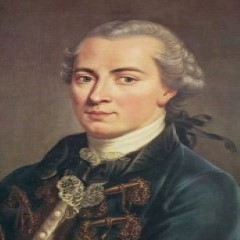STAT2507 H Assignment # 2 Complete Solution
STAT 2507 H
Assignment # 2
(Chapters 4, 5, and 6)
Last Name ||||||||||||| First Name ||||||||||||-
Student # |||||||||||| LAB Section |||||||||-
Note: Use spaces left to answer all questions. The total of marks for the questions is 100. In
case the individual marks are not assigned, within each question, all its parts are equally weighted.
Part I: Lab Questions
1. [8] Suppose that X has a binomial distribution with n = 31 and p = 0.7. Using the following
Minitab command, answer (a) - (c).
cdf;
binomial 31 0.7.
(a)[3] P(X<20) = and P(X 20) =
(b)[3] P(X>20) = and P(X 20) =
(c)[2] P(18<X<23) =
2. [9] Suppose that X be a Poisson random variable with mean = 3. Answer (a) - (c) using
following Minitab command.
cdf;
Poisson 3.
(a)[3] P(X = 2) =
(b) [3] P(2<X 4) =
(c) [3] P(2 X<5) =
3. [6] Suppose that X has a hypergeometric distribution with parameters N = 32, M = 12 and
n = 7.
(a)[3] Using the following Minitab command, calculate the below probabilities.
cdf 4;
hypergeometric 32 12 7.
P(X 4) = and P(X>4) =
(b) [3] Using the following Minitab command, calculate the value of \a" such that
P(X a)>0:8 for the hypergeometric distribution in part (a).
invcdf 0.8;
hypergeometric 32 12 7.
a =
4. [7] Suppose that X has a normal distribution with mean, = 12 and variance, 2 = 9.
(a) [5] Calculate the given probabilities using below Minitab command.
cdf x;
normal 12 3.
[2]P(X>14) = and [3] P(13 X 18) =
(b) [2] Calculate the value of a such that P(X a) = 0:44, using the following Minitab com-
mand when X N(12; 9).
invcdf 0.44;
normal 12 3.
P(X ) = 0:44.
Part II: Long Answer Questions
1. [10] Calculate the corresponding probabilities
(a) [5] Suppose that P(A) = 0:6, P(B) = 0:7, and that the events A and B are independent.
Find [2]P(A
T
B), [1]P(A
S
B), [1]P(AjB) and [1]P(BjA).
(b) [5] Suppose that P(A) = 0.4, P(B) = 0.5, and that the events A and B are mutually
exclusive. Find [1]P(A
T
B), [2]P(A
S
B), [1]P(AjB) and [1]P(BjA).
2. [10] The random variable x is de ned as the number of mistakes made by a typist on a randomly
chosen page of a physics thesis. The probability distribution follows:
x 0 1 2 3
p(x) 0.3 0.40 0.20 ?
(a) [4] Calculate [1] p(3), [1.5] the expected number of mistakes per page and the corre-
sponding [1.5] standard deviation.
(b) [2] Find the following probabilities: P(X<1) and P(0 X<2).
(c) [4] In what fraction of pages in the thesis would the number of mistakes made be within
two standard deviations of the mean?
3. [10] Steve takes either a bus or the subway to go to work, with probabilities 0.25 and 0.75,
respectively. When he takes the bus, he is late 40% of the time. When he takes the subway,
he is late 30% of the time. If Steve is late for work on a particular day, what is the probability
that he took the bus?
4. [10] Of all the Harry Potter books purchased in a recent year, about 60% were purchased for
readers 14 or older. If 12 Harry Potter fans who bought books that year are surveyed, nd
the following probabilities.
(a) [3] At least ve of them are 14 or older.
(b) [4] Exactly nine of them are 14 or older.
(c) [3] Less than three of them are 14 or older.
5. [10] In a food processing and packaging plant, there are, on average, two packaging machine breakdowns per week.
(a) [3] Calculate the probability that there are no more than two machine breakdowns in a given week.
(b) [3] What is the probability that there are no machine breakdowns in a given week?
(c) [4] In a random sample 26 machines, what is the probability that there are no machine
break downs in at least one of them in a given week?
6. [10] Heidi prepares for an exam by studying a list of 15 problems. She can solve 9 of them. For the
exam, the instructor selects 7 questions at random from the list of 15. What is the probability that Heidi can solve all 7 problems on the exam?
7. [10] Suppose the amount of heating oil used annually by households in Ontario is normally dis-
tributed, with a mean of 760 liters per household per year and a standard deviation of 150 liters of heating oil per household per year.
(a) [3] What is the probability that a randomly selected Ontario household uses more than
570 liters of heating oil per year?
(b) [3] What is the probability that a randomly selected Ontario household uses between 680 and 1130 liters per year?
(c) [4] If the members of a particular household were scared into using fuel conservationmeasures by newspaper accounts of the probable price of heating oil next year, and they decided they wanted to use less oil than 97.5% of all other Ontario households currently using heating oil, what is the maximum amount of oil they can use and still accomplish their conservation objective?
STAT2507 H Assignment # 2 Complete Solution
First find the probabili...






Tutormaster
Senior JournalistSell Your Solution Report Solution Support Center
Online Users
-
 Tutormaster
Today
Tutormaster
Today





A+ - Thank you!
Thanks for the positive feedback!